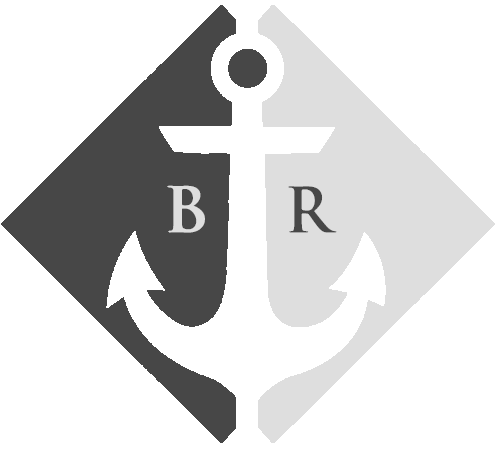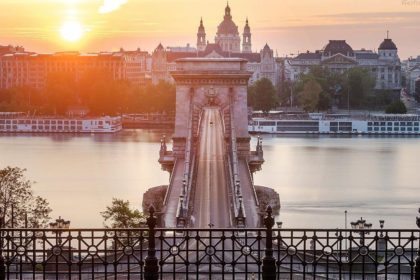

CONTACT US
1052 Budapest, Jane Haining Quay, Dock 11.
Customer support is available daily from 9:00 to 22:00.
Budapest, Jane Haining Quay, Dokk 11, 1052

Budapest, the Hungarian capital city was born in 1873 after the union of Óbuda (Old-Buda), Buda and Pest. There are 14 bridges Budapest which connects Buda and Pest; two of them are used by the railway. The oldest permanent bridge is called Széchenyi Chain Bridge which was built in the first part of the 19th century. Before that in the Hungarian history, there were only temporary bridges so crossing through the River Danube was not simple and sometimes – especially during melting of ice – it could be even dangerous.
It was the first permanent bridge in the Hungarian part of the River Danube so it had an important role in Budapest history. Its building was initiated by a famous Hungarian count, István Széchenyi. The bridge was designed by William Tierney Clark, and a Scottish man, Clark Ádám had also an important role.

It is the second permanent bridge in Budapest; it was built between 1872 and 1876. In 2002, a major renovation was performed on it. It was named for the daughter of King Béla IV who reigned in the 13thcentury. During his reign, there was the Tatar invasion, and the king vowed that he would send his daughter to a monastery to be a nun if God helped him and his country. After the danger, the king did so. His daughter became a nun and later she canonized because of her good Christian life. At the central pillar there is an extra bridge to the Margaret Island which was built in 1900, before that the island was only accessible by boat.
It connects the bank of the river and the Shipyard Island like K-bridge, and it has also an important role in the Island Festival in summer because necessary equipment is transported there and also visitors with caravans can drive along it.
In Hungary, it is the main important railway connection above the River Danube and it has the heaviest railway traffic, too. Its first opening was in 1877 but since then is damaged and re-built in multiple times. Near the bridge, MÜPA (Palace of Arts) was built in 2004. Tracks were covered by sound-proof plates to reduce noise pollution.
This was opened in 1896. A year and a half later, on the 31st May in 1898, a tram route started along the bridge. It is actually the continuation of the Small Boulevard and ends right below the Gellért Hill; it connects the Saint Gellért Square and the Fővám (Main duty) Square.

As many of bridges of Budapest, its ancestor was also built in the late 19th century, in 1896. It had to be rebuilt in 1955. In 2008, its big renovation was performed during which the whole steel structure of the part located above the main branch of the River Danube was exchanged; pillars were also strengthened.
It was first opened in 1903 and it was unique because it was huge and it had no pillars in the bed of the river. At that time, there was no other chain bridge in the world like that. It received its name from the wife of the King and Emperor Franz Joseph – she was also known as Sissy. Another important fact about this bridge, that you can find the Dock 11 on the Pest side, from where is the Departure of our sightseeing cruises and dinner cruises.
It was named for Kvassy Jenő who was a Hungarian water engineer. The bridge connects the northern part of Csepel Island with the District IX of Budapest.
It was exploded during the 2nd World War and it was rebuilt between 1950 and 1952; it was re-opened on the 22nd of November 1952. Then it received the name of the famous Hungarian romantic poet, Sándor Petőfi.
It is the longest bridge above the River Danube in Budapest and also one of the most important bridges in the traffic of the capital city: on average, 150 thousand vehicles pass along it every day.

It connects Óbuda and Shipyard Island. Its grids are similar to the “K” letter; actually, it was built from the elements of a military bridge which was easy to assemble. In summer, visitors of the Island Festival use this bridge. It has also played some role in the pop culture because two foreign music clips were recorded there: Mi fido di te by the Italien singer Jovanotti and Life it Up by Nicky Jam.
It is the most southern bridge of the River Danube in Budapest and also the part of some international main roads.
This is second newest bridge above the River Danube in Budapest. It can be found exactly next to the Southern Connective Railway Bridge. Originally, it was called Lágymányosi Bridge between 1995 and 2011. Then it was re-named for Ferenc Rákócz II who was a Hungarian nobleman and he started a fight for freedom in the early 18th century.
This is the second longest bridge in the country. It can be used from 2008 and it is the symbol of the modernization of the country. In engineer aspect, the bridge consists of five linking bride structures. In the upper third of two pillars, there are also visitors centers created.

Historical buildings in Budapest
Besides the bridges, historical buildings in Budapest are also worth visiting. The most representative buildings are in the Castle District. Here you can see for example the Buda Castle with many exciting exhibitions or the Fisherman’s Bastion. This latter one is one of the most famous monuments in Budapest; it was built by Frigyes Schulek as the part of the millennial celebrations of the Hungarian Conquest.
Lots of the buildings of the capital city were built in the 19th century. The Building of the Hungarian Parliament was created in Neo-gothic style but some of its elements were made in Classicists, Baroque or even Renaissance style. It was designed by Imre Steindl.
Churches in Budapest are also famous, maybe Saint Stephan and the Mathias Churches are the best-known ones.
Most of the historical, representative buildings of the city stand on the bank of the River Danube so during a cruise they offer an imposing view.